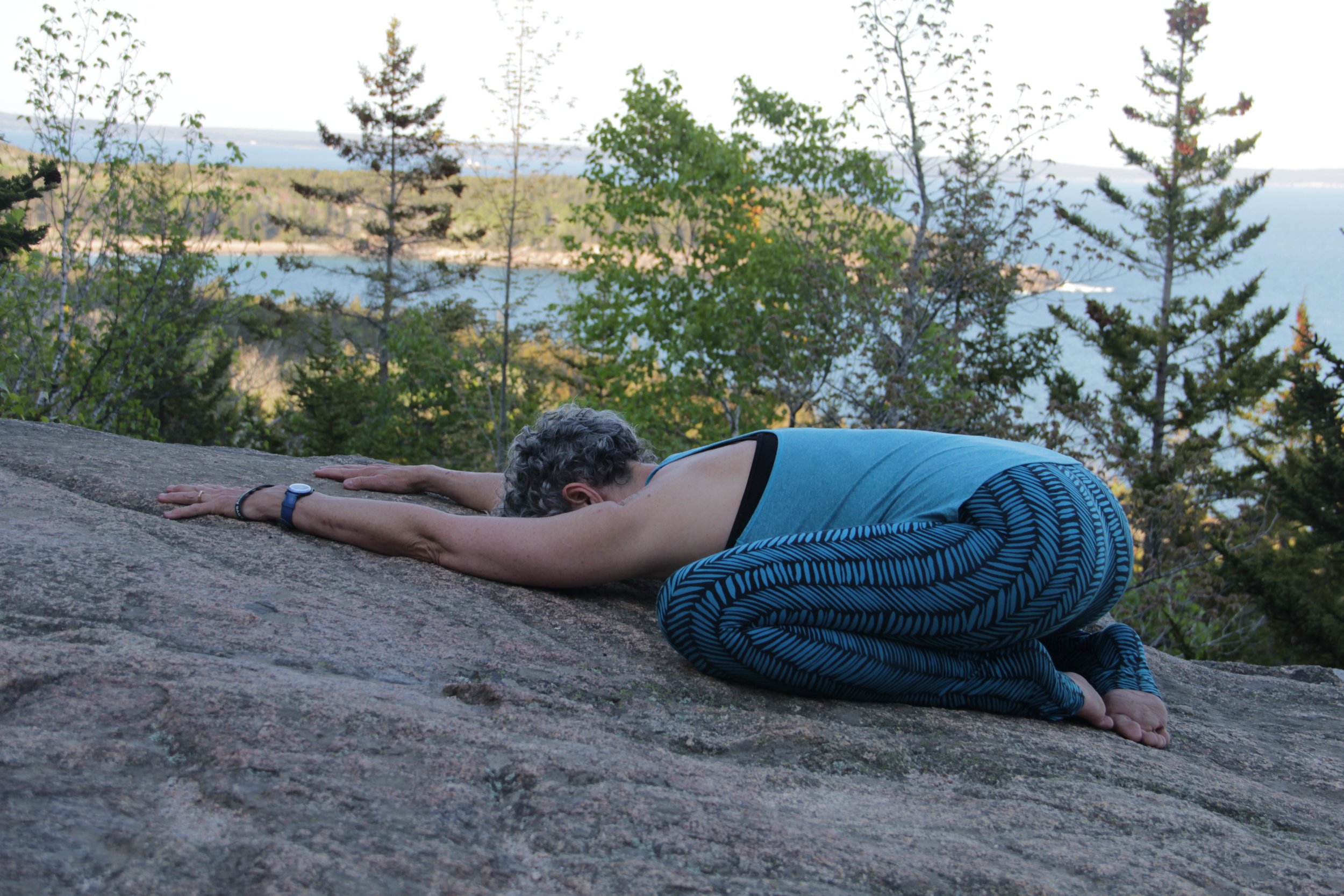The Benefits and Opportunities of Yin Yoga
You may be new to Yin Yoga, a practice that uses passive poses held for 2-5 minutes or more to stretch connective tissue and muscles. As you come into a pose, Yin Yoga invites you to use your breath to draw attention to your body, allow relaxation as you linger in the pose, notice your reactions, both emotional and physical, and feel the lengthening process.
Photo by Rose Edwards
What is Yin and Yang?
In the yoga tradition, yin and yang concepts extend beyond the mat. It's a fundamental principle that everything in life, including our bodies and minds, has a yin and yang aspect. These dualistic forces are not opposing but rather interdependent and constantly transforming.
Yin Yang
Still Active
Quiet Loud
Form Function
Substance Movement
Slow Fast
Internal External
Taking the qualities of Yin into a yoga practice, we move slowly, invite stillness, focus on our internal signals, and remain quiet. Your Yin teacher will describe and demonstrate the pose along with modifications. We use props to bring the earth up to our bodies and support the stretch. Each person is unique and will want to find comfort in the pose. Your neighbor could be more flexible; the only thing that matters is how you feel.
As you feel your body, you will likely notice there is a tension between stiffness and compliance. There is no judgment on either aspect. Different parts of your body will likely feel different. Go gently as you seek to lengthen. Move with softness and respect. Stay aware and curious. Use props to create comfort and ease.
Anatomy of Yin Yoga
You are likely aware that your body comprises muscles, bones, and joints. You may or may not have heard of fascia. This connective tissue forms a body suit from head to toe. Fascia tissues are flexible and strong but can become disordered and stiff when injured or neglected. Stretching in Yin Yoga allows the fascia to lengthen and tissues to restore order. This process invites hydration into the stretched tissues, allowing for more pliability and range of motion. These poses also invite circulation and lymphatic flow.
The benefits of yin yoga include:
Joint range of motion – It is easy to lose range of motion through lack of use. If you don’t regularly move through your full range of motion, the connective tissue will shorten. Yin Yoga allows the tissues to lengthen to allow for full movement.
Paying gentle attention—It is common to feel tight in your hips, pelvis, upper back, and lower spine. Yin Yoga promotes flexibility to help you find new freedom in these locations.
Stretch to Your Comfort Zone – Yin Yoga is not intended only for people who are made of rubber. Each pose is offered to suit your body and your level of flexibility. Stay in your comfort zone. If you feel good, you can extend your stretch but avoid going too far or causing a strain.
Reduce Physical Tension – Yin Yoga can feel like a massage as you allow for the deeper stretch in a three- to five-minute or more hold.
Hydrate and Workout Your Connective Tissue – The stretching process signals the connective tissue to hydrate, allowing for more ease of movement.
Invite Emotional Awareness – The slow pace allows you to be with yourself and your feelings. It is useful to keep your mind on the mat. If your thoughts wander, come back through your breath or sensation.
Build Patience – The long holds of a Yin practice invite you to practice patience. You may be asked to stay longer than you are inclined. Allowing this longer time will also build your patience for other times in life.
Reduce Stress and Anxiety—Yin Yoga is a peaceful, quiet, cooling time for the mind and soul. You can feel safe on the mat, removed from life’s troubles and anxieties. The practice will activate your parasympathetic system and turn off your flight-versus-fight instinct.
Most likely, you can find Yin Yoga classes locally. I have some Yin/Yang class videos on YouTube. I offer Yin Yoga privately as well.


